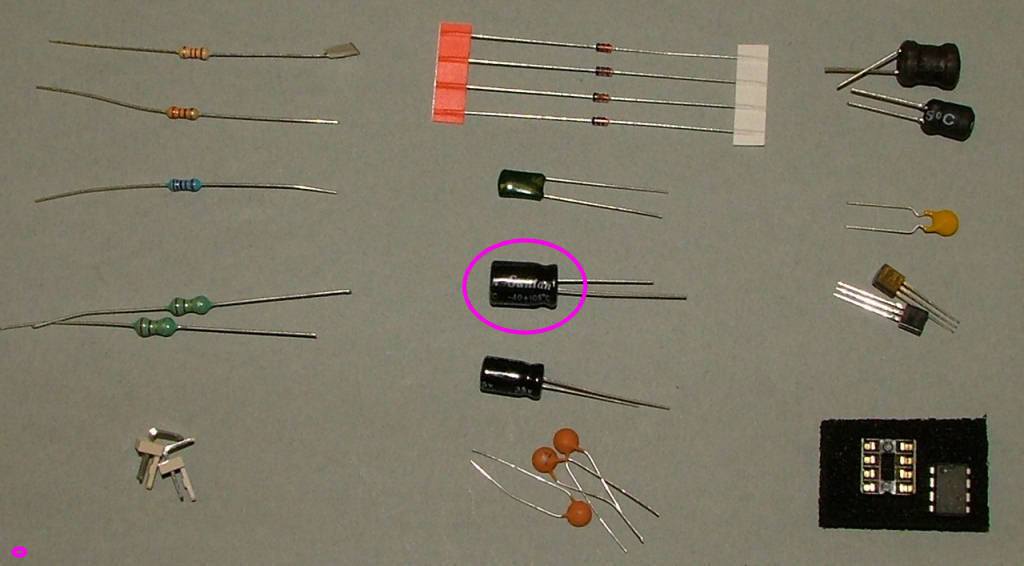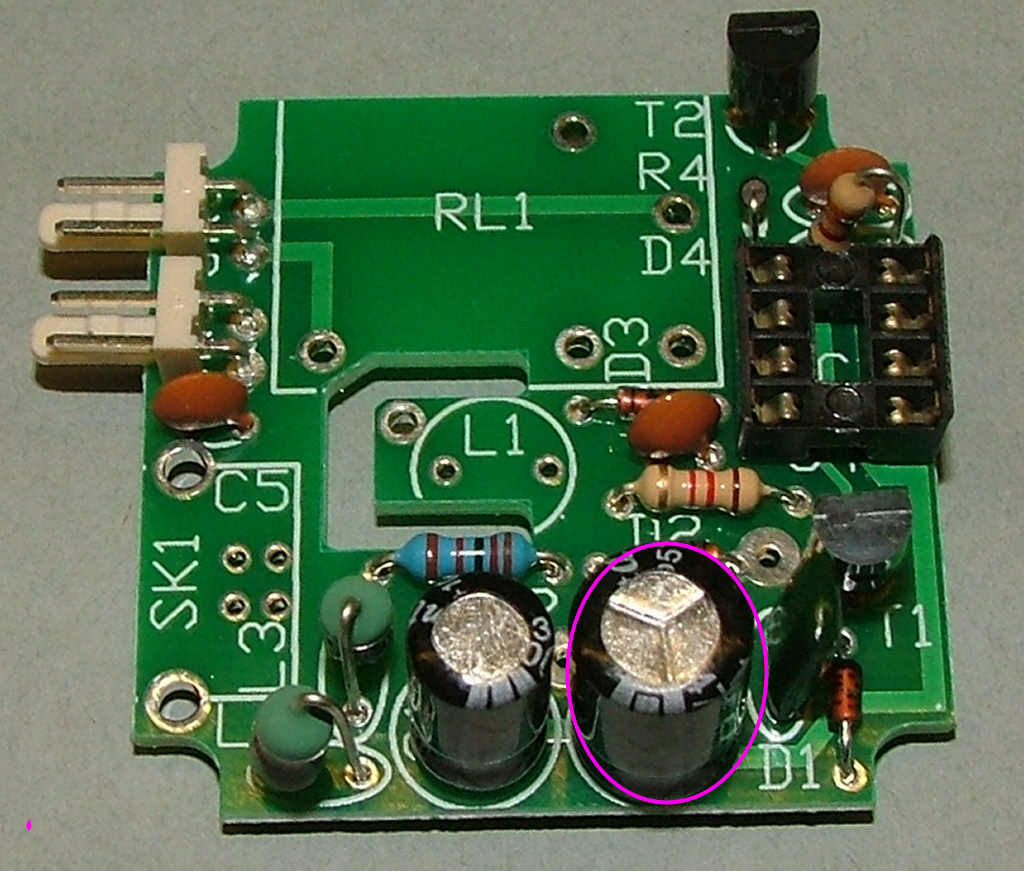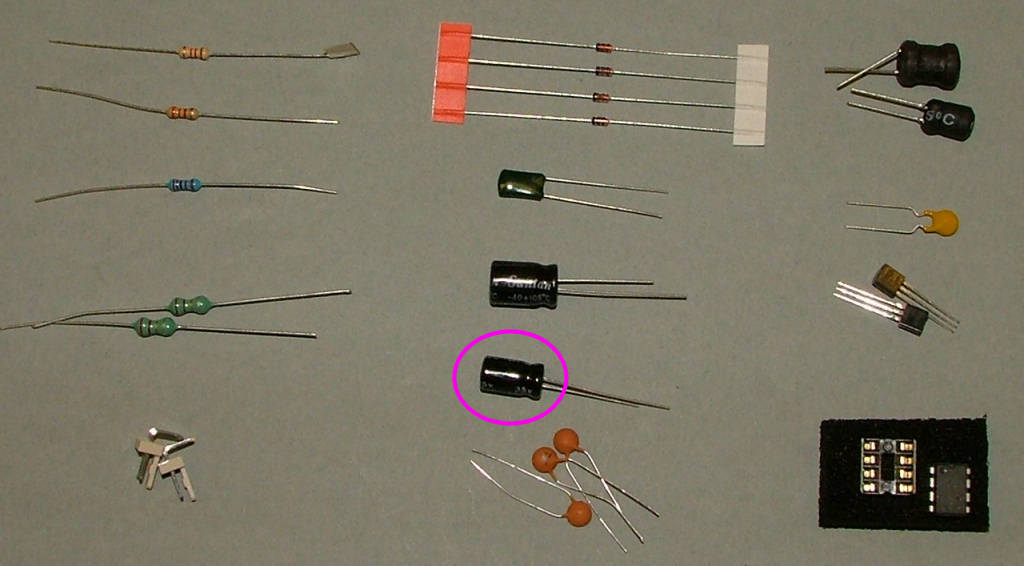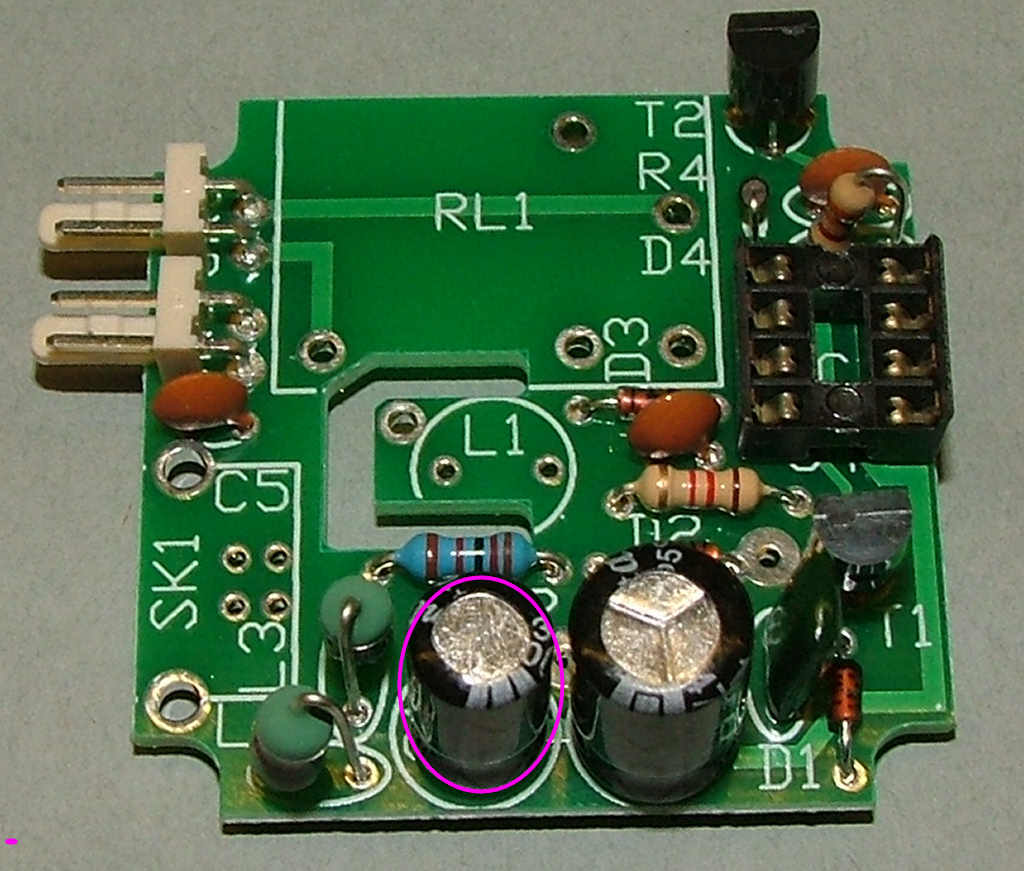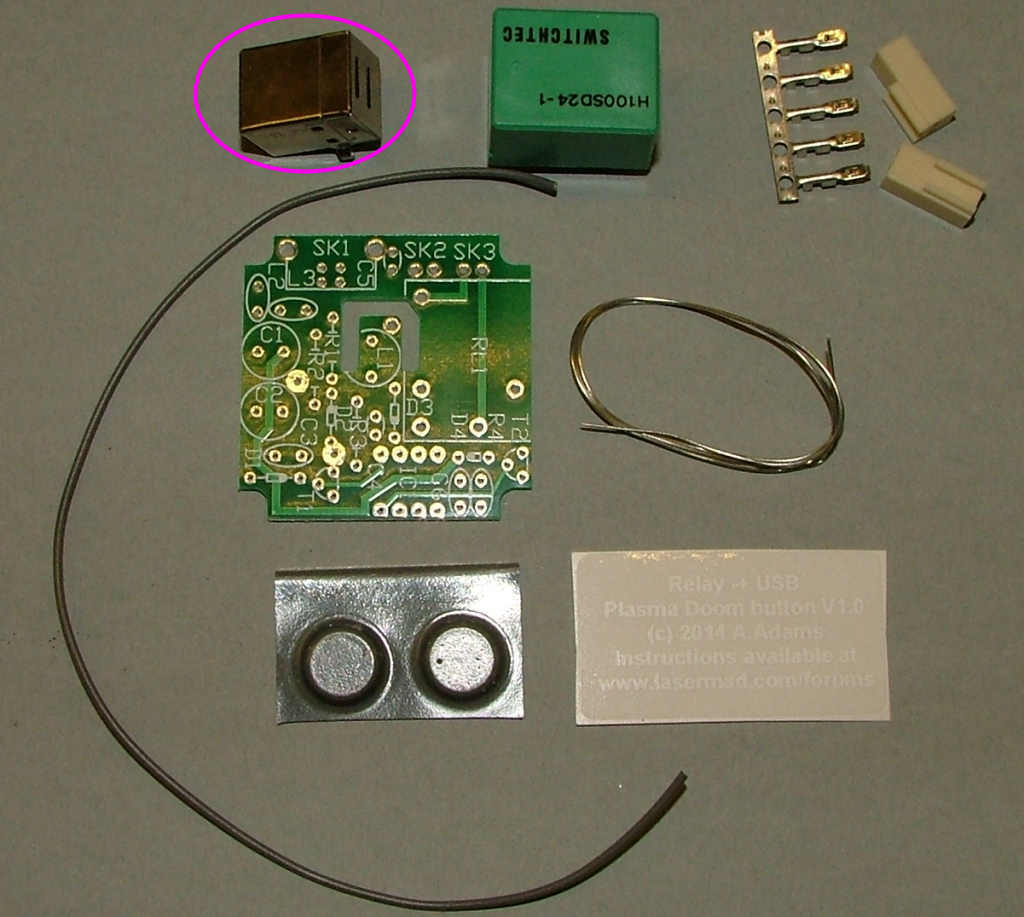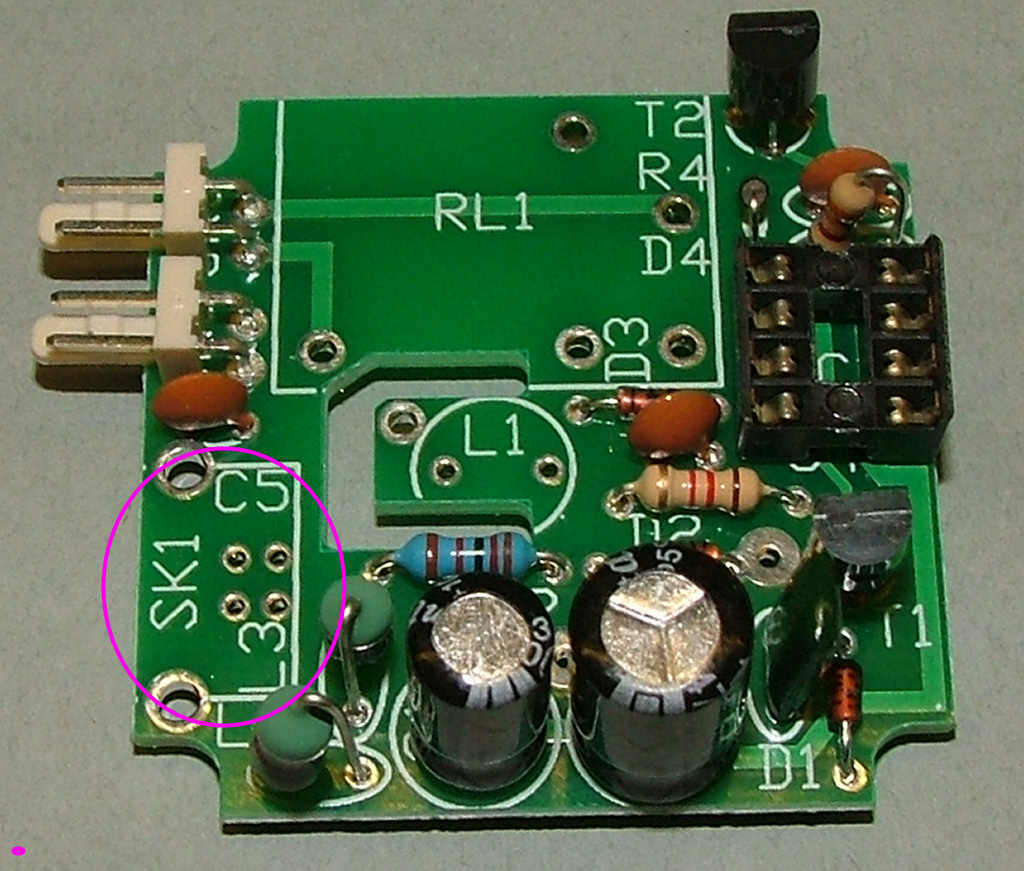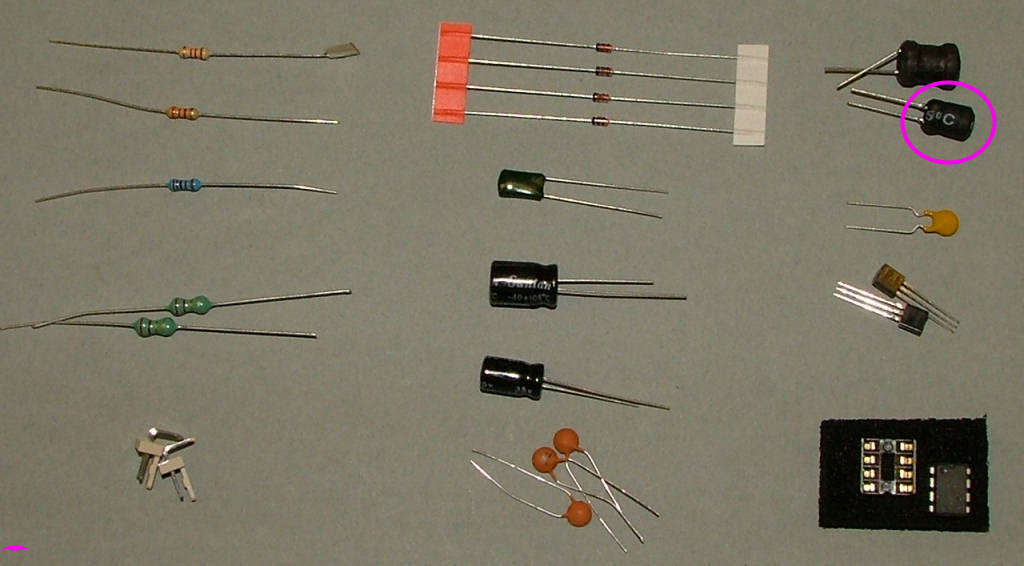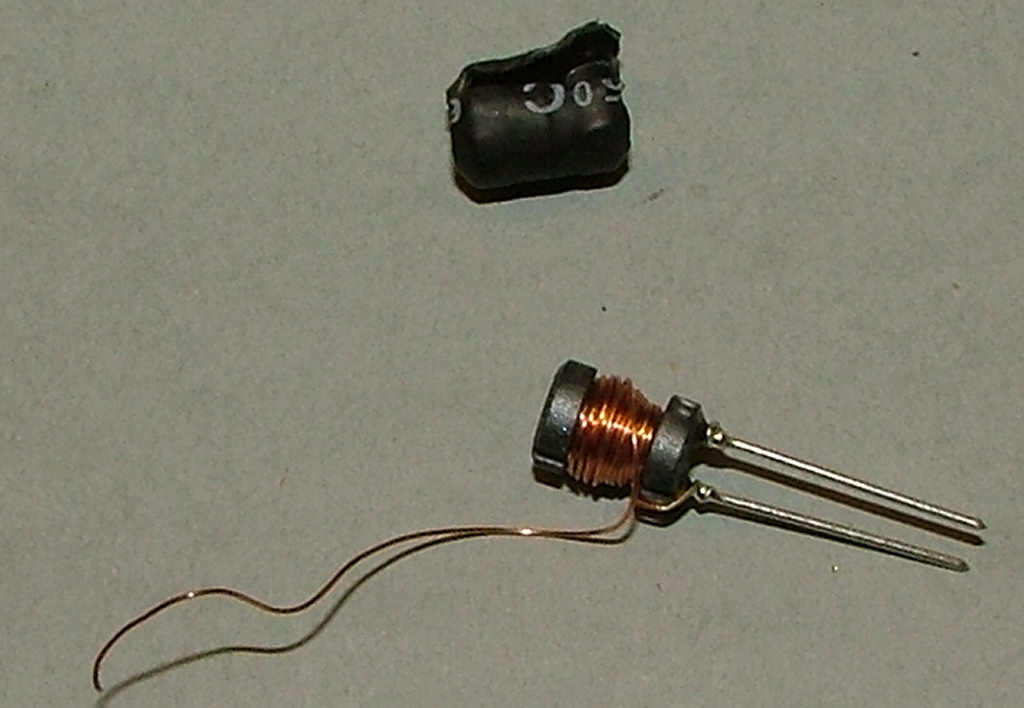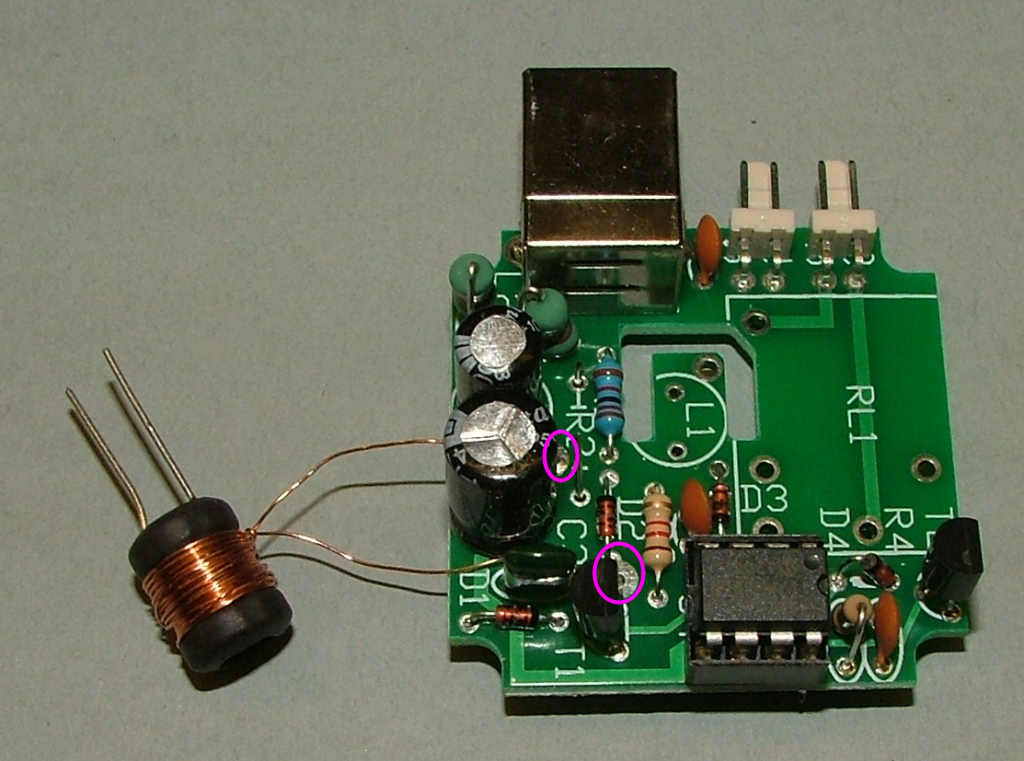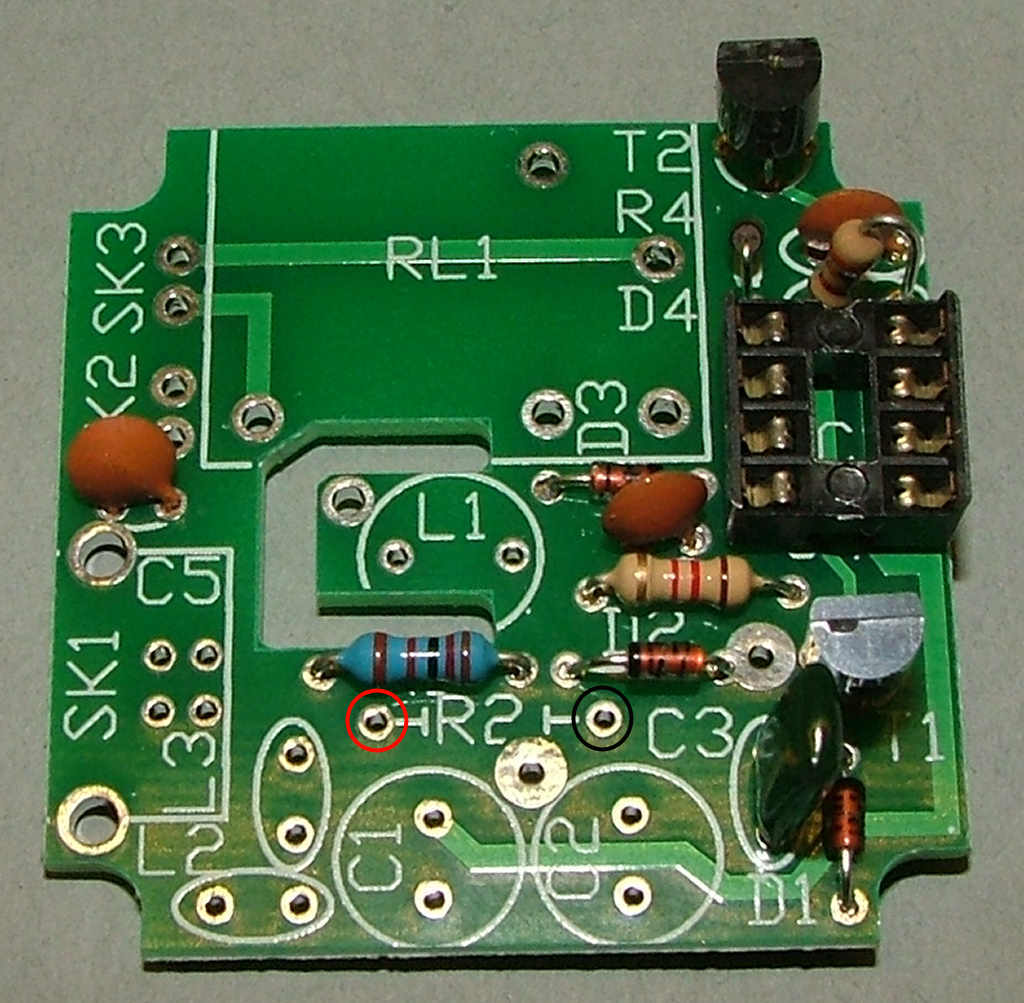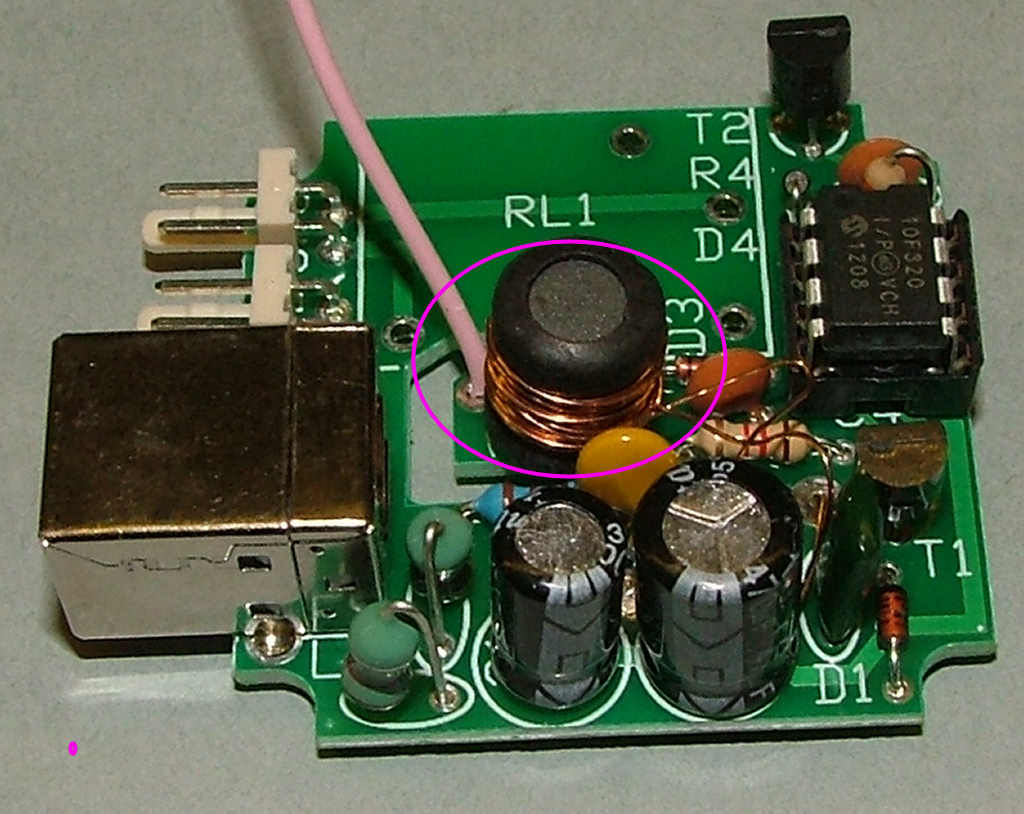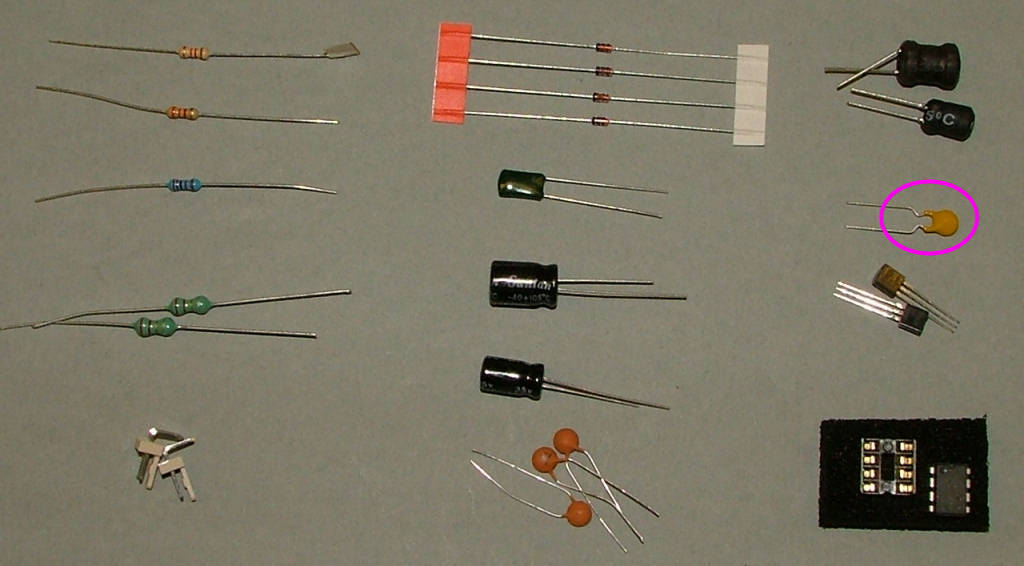If you intend to use the relay now is the time to fit this, remeber to remove that solder bridge across C6 or it won't switch:
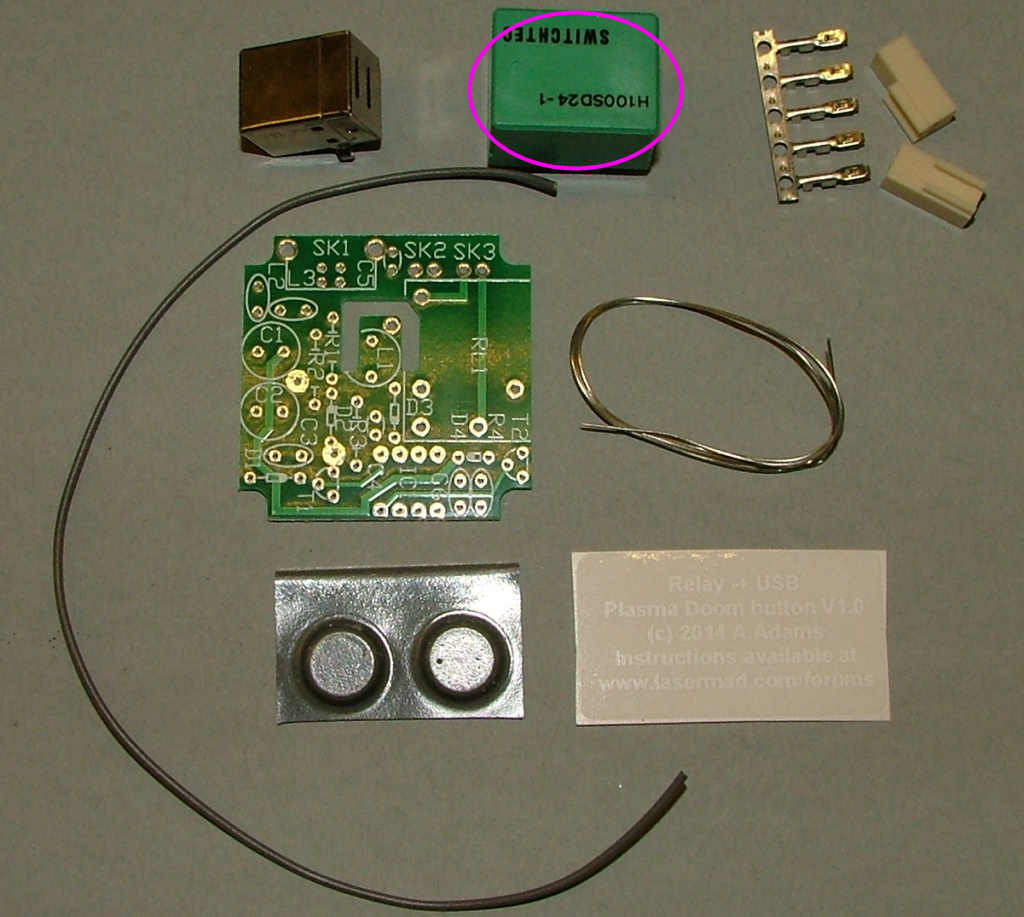
Note that from 2020 an alternative relay is supplied, the original relays are no longer available. If you received a black relay instead of green, follow these modifications:
1. Cut the corner pin (directly under the AC voltage and current rating markings) that has no corresponding PCB hole off.
2. Bend the centre pin on the opposite side flat so it sticks out from the side of the relay.
3. Fit the relay, bridging from the flattened centre pin to the pad next to D4.
4. You'll notice one pin is not connected - it's to the left of the marking for T2. Connect a short piece of wire from this pad to the cathode of D4 (the banded end).
This will work as a momentary open relay. There is also little clearance between the relay body and the 2-pin connectors so smaller 90 degree headers are now used.
